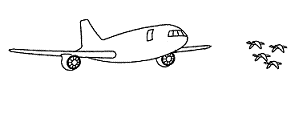Bird Strike Committee Proceedings

Bird Strike Committee-USA/Canada Joint Annual Meeting: 2nd (2000)
Date of this Version
8-8-2000
Document Type
Article
Abstract
The U.S. Department of Agriculture’s National Wildlife Research Center (NWRC), through an interagency agreement with the U.S. Federal Aviation Administration (FAA), conducts a national research program to define and reduce bird and other wildlife hazards to aircraft. The goal is to provide the FAA and airports nationwide with a scientific foundation for policies and recommendations related to wildlife and aviation safety. Research tasks conducted by NWRC under the agreement include: 1) investigations of habitat management and land-use practices on and near airports to reduce bird activity; 2) development and evaluation of bird repellent and frightening methods for airports; 3) management and analysis of the National Wildlife Strike Database for civil aviation; and 4) development of publications, including a manual on wildlife hazard management, for use by airport operators nationwide. The research, coordinated by NWRC’s Sandusky, Ohio Field Station, has resulted in over 100 scientific publications since 1992. Recent highlights include 1) development of a wildlife strike database for civil aviation with about 28,000 strike reports, 1990-1999; 2) publication of a report, based on analyses of data in the bird strike database, which indicated wildlife collisions with aircraft cost U.S. civil aviation over $300 million/year, 1990-1998; 3) partnership with private industry to develop chemical repellents for use against Canada geese on airports; 4) development of management program at JFK International Airport, New York, that resulted in a 90% reduction in gull-aircraft collisions; and 5) publication of a comprehensive manual for airport personnel entitled “Wildlife Hazard Management at Airports”.

